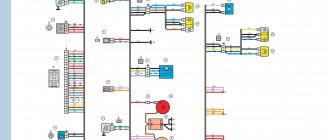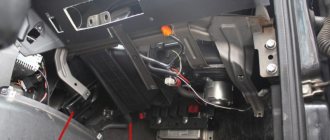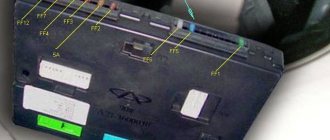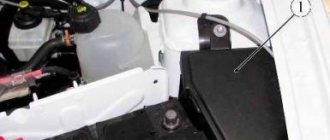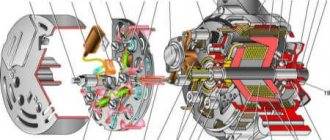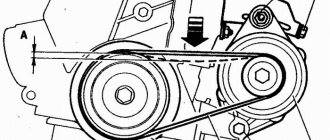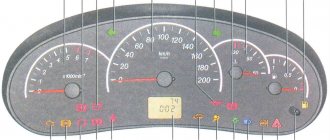Car window closers are gaining more and more popularity every day.
For normal operation of the device, the power window closer is connected to the alarm system so that when setting the car to the alarm, do not leave the windows open. Most modern cars are produced with door closers already installed; such a device is a small automated mechanism that closes the windows when the security mode is set.
There are two types
in the automotive market : a simple device, and a device with a wide range of functions. Conventional - a simple door closer only lifts the glass when the car is set to security mode; at this operation its functions end. You can connect the power window closer to a simple type alarm system yourself; the most important thing is to follow the contact diagram drawn in the instructions. Unlike simple door closers, multifunctional devices can perform a very wide range of work:
- Opening or closing
the glass with just one touch. In addition, it is also possible to work according to the standard scheme - when the button is held down until the glass rises; - It is possible to control a pair of glasses in one direction, or in the opposite direction;
- When the car is in security mode, all power window buttons are locked
. In this case, opening inside is excluded; - This device has a special function that stops the lifting if an obstacle appears in the path of glass movement. It is also possible to disable this option;
- It is possible, after disarming the car, to return the glass to the original position in which it was before the alarm was set.
{banner_content}
Principle of operation
The car is equipped with motors that raise and lower the glass. This process is carried out by applying voltage to the motor contacts. If a closer is installed, this connection is interrupted
.
It is in this gap that it is necessary to install an additional block, and when you press the button further, the signal first goes to the control unit, and then is sent to the lift motor. If the car is set to an alarm system, a signal is sent to this unit about the need to automatically close all windows.
Review of popular models of glass closers
We present for you an overview of popular glass closers in our country, which are installed by owners of a wide variety of cars - VAZ (Priora, Kalina, 2110, 2114), Hyundai, Nissan, Mazda, Kia, " Toyota" and many others. For ease of perception, the information is summarized in a table.
| Closer model | Description and features | Price as of autumn 2020 |
| Mongoose PWM-4 (colloquially car enthusiasts call them “Mongooses”) | There are several varieties of such closers. Designed to work with four glasses. There is no “memory”; windows are closed one by one. Trigger pulse - positive or negative. Output polarity - positive or negative. There is built-in overload protection. | 1200 rubles |
| Pandora DWM 210 | Works with two windows. There is a position memory. The type of trigger pulse is positive or negative. There is overload protection. Automatic stop of moving glass when it encounters an obstacle in the window opening. Automatic shutdown of the window lift motor when its cable breaks. Automatic detection of the type of security alarm control signals. The ability to disable security alarm sensors while the windows are moving to prevent false alarms in security mode. | 1300 rubles |
| Convoy CL-200 | Designed to work with two windows. The control pulse is negative, the outgoing polarity is positive. There is overload protection. | 800 rubles |
| Convoy CL-450 | Works with four windows. The control impulse is positive or negative. Outgoing polarity - positive or negative. There is overload protection. | 1300 rubles |
| Cyclon PWM-2b | Designed to work with two glasses. The control impulse is positive or negative. There is overload protection. | 850 rubles |
| Cyclon PWM-4 | Works with four glasses. The control impulse is positive or negative. There is overload protection. | 970 rubles |
We recommend that you buy glass closers manufactured under well-known brands. Do not buy cheap Chinese devices, since there is a high probability of purchasing a door closer with a low working life. In addition, there are many defective products in the low price category. Therefore, we recommend that you do not save money.
Conclusion
A window closer is a very useful device, so if your car does not have one installed, we recommend that you buy one. Installing a door closer with your own hands is quite possible for a car owner who has basic installation skills and knows how to read electrical diagrams. The main thing is that before installation, carefully study the attached documentation, and especially the connection diagram. As for choosing a model, buy devices from the middle or highest price category. They will not only be reliable, but also durable.
source
Door closer installation
Before starting installation, you need to study the door closer control system. The operating principle of this control system is extremely simple: the buttons switch the voltage on the lifting motors. The entire lifting mechanism is served by just two wires
, they differ in color: gray and blue. In the case when switching voltage is supplied to the blue wire, the glass installed in the door rises.
When the required voltage is applied to the gray wire, the entire glass is lowered, thereby opening.
Connecting a power window closer to an alarm system is not a very complicated process and requires only minimal knowledge in the field of auto electrics. All work should be done very carefully so as not to short-circuit the network
, or not to break the closer itself.
During installation, the control unit and all its communication elements are installed in the driver's door. This is because the main control is carried out by the driver, and all buttons must be nearby.
Once the control unit has been placed in the inside of the door, there is no need to install additional wires and route them outside.
It is advisable to install the unit itself as close to the panel as possible
, on which the control buttons are located. There is a category of people who prefer installing the block not in the door itself. This operation creates additional problems; it is necessary to pull additional wires to the driver's door, since the control panel is located there. In addition to the inconvenience, the operation of the glass lifting mechanism also slows down significantly due to a partial loss of voltage.
Installing a glass closer
When purchasing the device, the connection diagram for the glass closer must be included. Therefore, all further work must be carried out in strict accordance with it. The window closer unit itself can be installed anywhere in the car interior. Most often it is mounted under the door trim or under the front panel. The main thing that needs to be taken into account in this case is reliable protection of the device from moisture.
To work you will need the following tools:
- Phillips and flat screwdrivers;
- side cutters and pliers;
- electrical tape and/or heat shrink.
Now let's move directly to the question of how to connect a glass closer... As mentioned above, first of all you need to study the existing circuit. For ease of understanding, consider a door closer designed to work with 2 window regulators. Its typical connection diagram will look like this:
Depending on the design of the housing, the module is attached to one or two self-tapping screws (although there may be other options). If you decide to install a door closer under the driver's door trim, be careful when removing it. There are many different wires laid under the trim that ensure the operation of the power windows and central locking. Directly for work you will need a Phillips screwdriver, with which you need to unscrew the mounting screws and remove the trim (installation of the panel may differ for different cars).
What types of car window closers are there?
There are simple window closers, which, when the alarm mode is turned on, automatically go off and raise the glass, and multifunctional closers, the capabilities of which are significantly increased. The multifunctional door closer, in addition to the main function, has such pleasant additions as memory mode, i.e. opening the windows to their original position, provided that the car was left with the alarm activated for no more than 2 hours. This mechanism is also often called car window closers with memory. In addition, it is possible to control several glasses at once, as well as an ESP blocking function. This is just a basic list of functions.
What can I say, a very comfortable option, without which a business class car will not bring complete pleasure to its owner.
Microcontroller-based glass closer
On the car accessories market you can now find a variety of imported devices. The most popular among them is the device for controlling the movement of automobile glass . This component of the car's electrical circuit is a kind of automatic machine that alternately raises the car windows when the car is set to the security alarm. The prices for these devices are relatively high.
If you want to equip your own car with such a device with additional functions, such as blocking the operation of the device when the doors are open, when the ignition switch is illuminated, or when there is an obstacle in the way of the closing window. The article describes a scheme for developing such a device with your own hands.
Electric closer, which is shown in Fig. 1, is designed for sequential closing of all four car windows, as well as the sunroof. The system is activated when the car is armed with the security alarm.
The principle of operation of the circuit is quite simple. A short electrical impulse, which lasts only one second, comes from the output of the security alarm unit and controls the central locking of the car. Depending on the standards by which the car was manufactured, the active signal level to control the central locking of the car can be used as a positive pulse with a voltage of +12 V, or a negative pulse relative to the common wire. Therefore, depending on the polarity of the control pulse, the closer has a special connector X2 through which the pulse passes.
The figure shows a diagram of an electric glass closer built on a PIC16F84A microcontroller:
The signal wire, which controls the central locking for unlocking the doors, as well as the alarm, is connected to the door closer interruption input. The diagram shows contacts (5 and 2, connector X2). The active signal for each of these inputs is a positive or negative pulse.
In order to provide for the possibility of emergency termination of the operation of the door closers, it is necessary to connect the signal wire, which is used to unlock the central locking, to the corresponding input, which is responsible for stopping the operation of the window regulators. A deviation of the signal to raise the windows can be signals coming from: the ignition switch (when the key is in the first position and the battery is connected), as well as from switches installed on the doors (when the door is open, the signal coming from the limit switches sends a negative signal and cancels the action). Using this function is possible if the ignition switch is correctly connected to the corresponding contacts of the closer. In the case of ignition switch illumination, you need to connect the signal wire from the door to pin 1 of connector X2. Additional electrical elements must be connected to the closer as shown in Fig. 3.
The electric motors of the module, which is responsible for controlling the raising of the car windows, are turned off in the presence of an electrical impulse, which occurs as a result of the cessation of collector noise from the electric motor installed in each door of the car. This noise can be measured using an oscilloscope.
The figure shows this noise, with input data (signal amplitude -10 µV/div and time interval -5ms/div). The electric motor of the device turns off after continuous operation for 9 s.
Closer operation process
The device works as follows. When the signal comes from the security alarm control unit through contacts K1.1 and relay K1, the door window motor receives power for a period of time equal to 0.75 s. The last 0.25 s microcontroller DD2 measures the frequency level of the collector noise signal, which is amplified on the electric motor using element DD1.5.
Transistors are transferred to the linear section of the input characteristic by resistor R2. Element DD1.2 is created as a buffer to amplify the signal supplied to the input of the microcontroller DD2. The relay that powers the electric motor remains switched on when the noise frequency is above 480 Hz. – the electric motor is in working condition.
Simple do-it-yourself glass closer
The principle of operation of the device is based on increasing the current at the moment when the glass is in the uppermost position.
When the driver puts his car in security mode, a signal from the lock control unit is sent to an electromagnetic type relay. Through a resistor, the relay connects the capacitor to the power supply, as a result the capacitor is charged.
When the signal from the lock completely disappears, the capacitor is connected to the second winding of the relay. Next, power is supplied to the timer. The output of the timer will generate the required voltage, which will open the transistor. Since the group of relay contacts is closed, voltage for holding will flow through the already open transistor to the contact group.
The transistor is needed here in order to stabilize the temperature of another transistor in the circuit. In addition, a group of relay contacts supplies voltage to the first winding of the relay connecting the button. Through a resistor and a closed contact, as well as through the glass control button, power is supplied to the lift motor, and the glass will rise.
When the window is fully raised, a higher load is created on the motor, therefore the current also increases. This leads to a voltage drop across the resistor, as a result of which the transistor will close, all voltage will go from the relay, and then the entire circuit will be de-energized.

